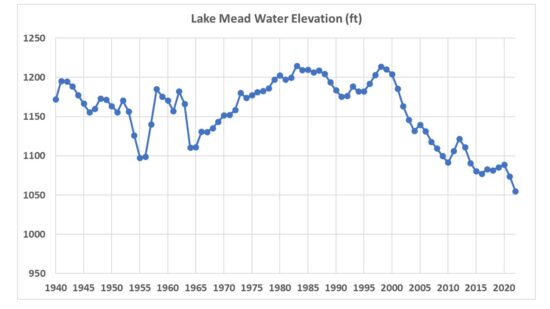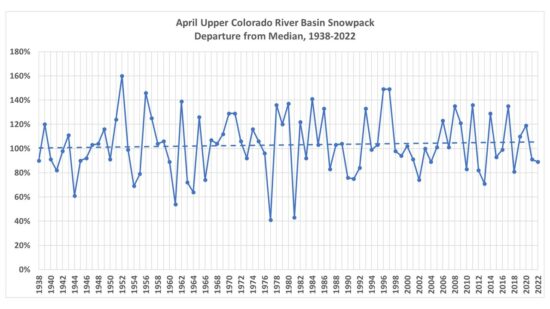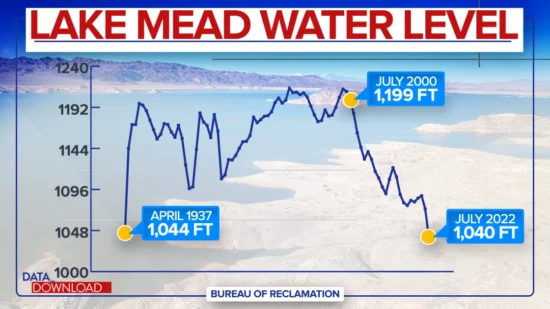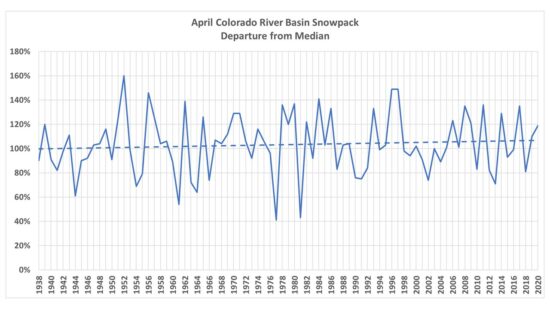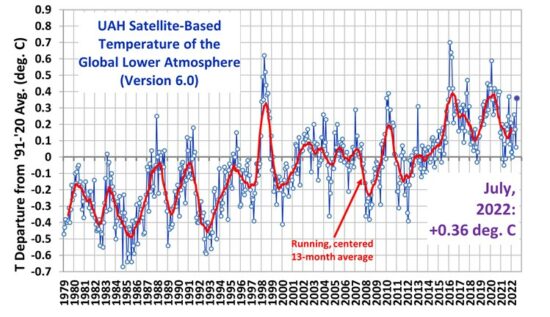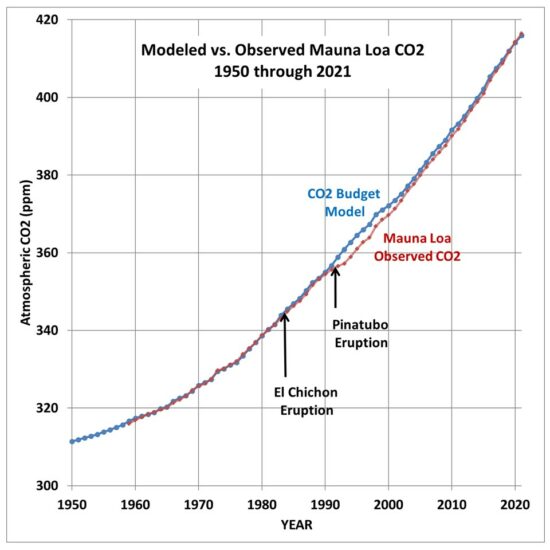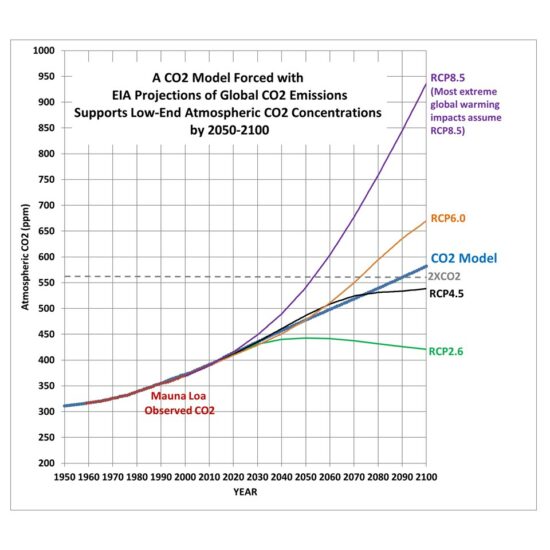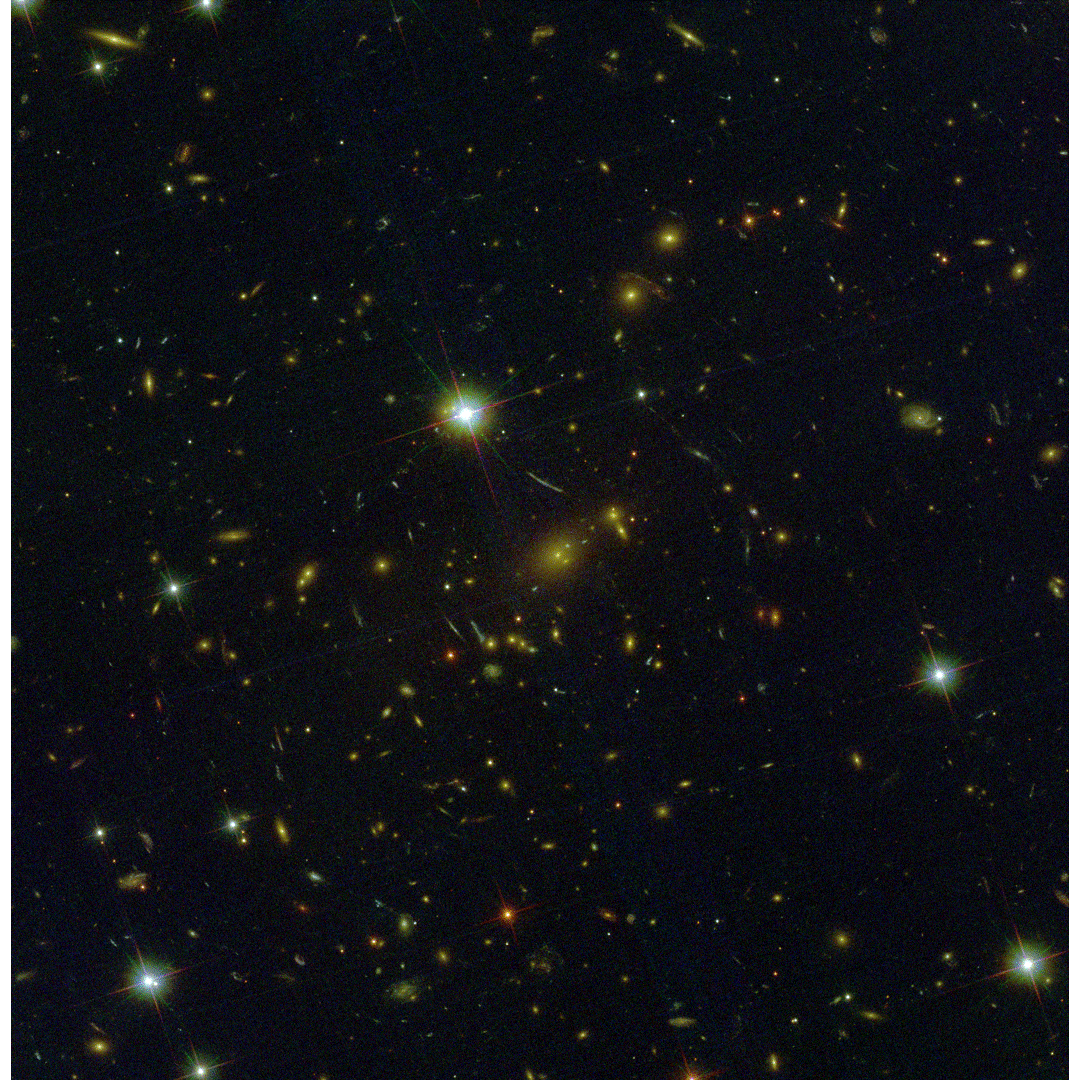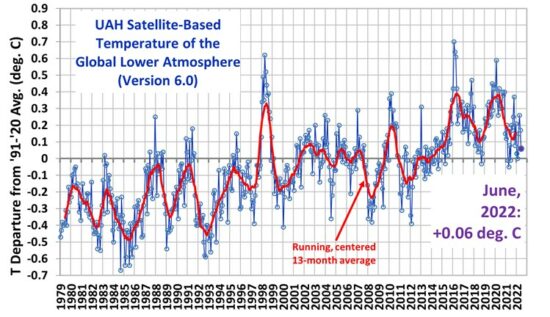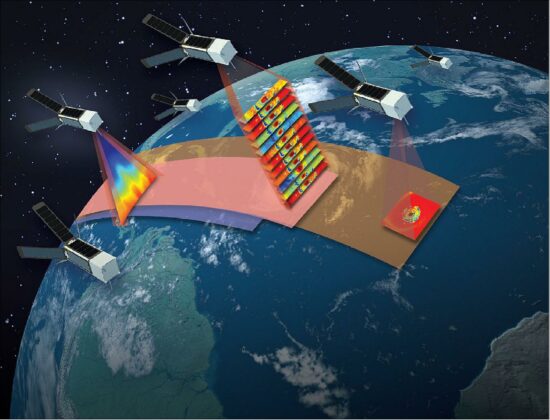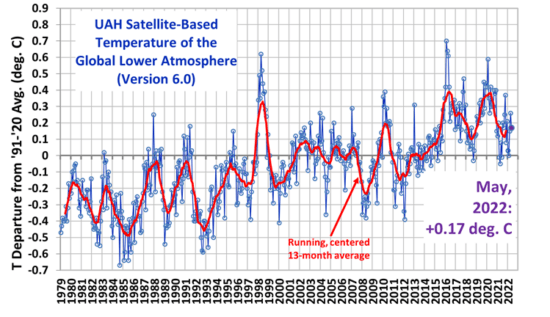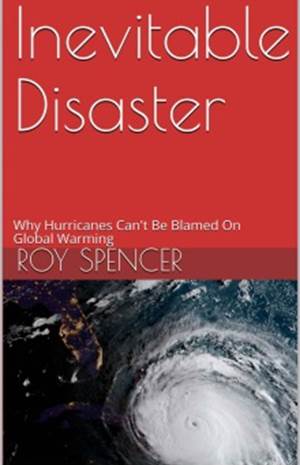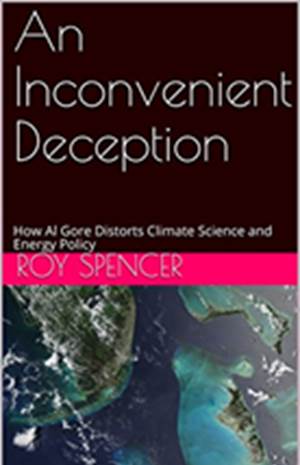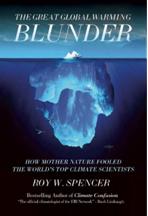Key Points
- Contrary to claims that drought is causing Lake Mead water levels to fall, the Colorado River natural flows into Lake Mead show no long-term trend since 1930.
- Decadal time scale variations in river flow do occur, though, related to the Pacific Decadal Oscillation (PDO).
- Since about 2000, use of Lake Mead water has exceeded river inflow, causing water levels to drop. The negative phase of the PDO since that time has exacerbated the problem.
Natural Water Flows into Lake Mead: No Long-Term Trend
Record low water levels in Lake Mead are widely blamed on drought, although what “drought” means is seldom specified. The public perception is that lower precipitation amounts have reduced water supply to Lake Mead (which comes from the Colorado River), usually attributed to human-caused climate change, and that this is why water levels are falling.
But data from the U.S. Bureau of Reclamation (USBR) show that there has been no long-term trend in natural Colorado River flow into Lake Mead:
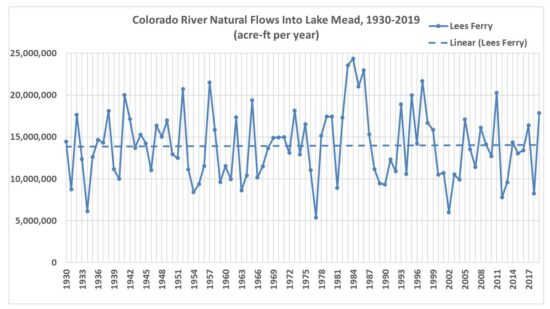
Fig. 1. Yearly “natural” water flows into Lake Mead, corrected for local human-induced changes in water flow upstream. Details of those corrections are described here. Data source here.
The flows in Fig. 1 have been slightly adjusted for local human-caused changes to the flows upstream, and provide our best answer to the question of whether long-term global climate change is responsible for a decrease of river water flow into Lake Mead.
The answer is “no”.
Does Climate Change Theory Even Predict Reduced Precipitation? No
The next question is, does climate change even predict future reductions of precipitation over the Colorado River watershed? The following plot shows an average of 183 climate model simulations of average yearly precipitation in an area approximating the Colorado River watershed. The models suggest a slight increase in total precipitation with warming.
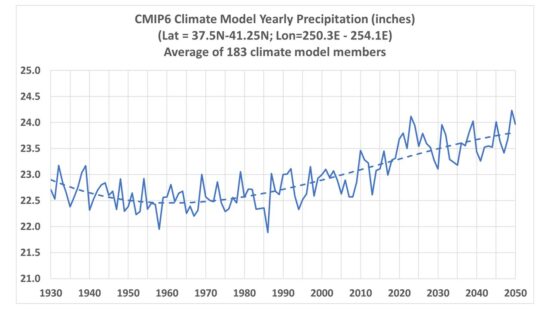
Fig. 2. CMIP6 model average yearly precipitation 1930-2050 over an area approximating the upper Colorado River watershed. Data source here.
Most of the water entering Lake Mead is from snowmelt in the mountains; little of the water falling on lower elevations tends to be used by local vegetation with little runoff reaching the Colorado River. Fig. 3 shows there has been no long-term trend in the snowpack measurements in the upper Colorado River watershed.
So, not only has there been no observed long-term reduction in water flow into Lake Mead, or reduction in the watershed snowpack, climate change theory doesn’t even support such a change up to the current time (or even to 2050).
So, Why are Lake Mead Water Levels Falling?
What has changed since Hoover Dam was constructed in the 1930s is the amount of water being removed from Lake Mead. Since about 2000, that water use has exceeded the water input into the lake. This is the most recent available demonstration of that fact, published in 2012:
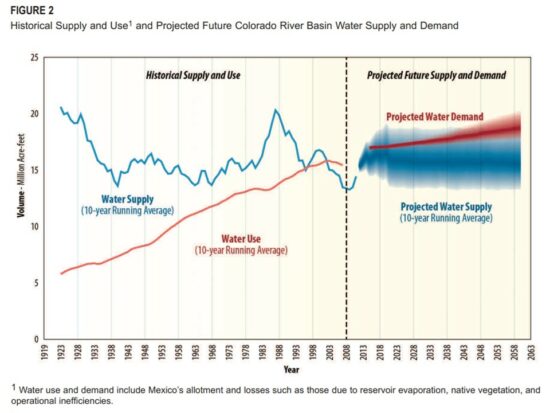
Fig. 4. The Colorado River basin water supply exceeded demand up until the year 2000 or so, and since then Lake Mead water levels have fallen due to overuse.
As long as water use exceeds supply, Lake Mead water levels will continue to fall. (This is somewhat dependent upon the regulated releases from Lake Powell, upstream. There is a “Fill Mead First” initiative that would draw down Lake Powell in an attempt to raise Lake Mead, based upon calculations that net natural water losses from combined evaporation and bank seepage from Mead and Powell would be reduced.)
The Role of the Pacific Decadal Oscillation (PDO) in the Current Problem
While the major problem with Lake Mead is overuse, there are multi-decadal fluctuations in Colorado River flows which have made matters worse since approximately 2000. If we take the river flow data in Fig. 1 and compute the accumulated departures from the long-term average flow (because this is how a reservoir like Lake Mead responds), we find that there have been periods of lesser and greater flows.
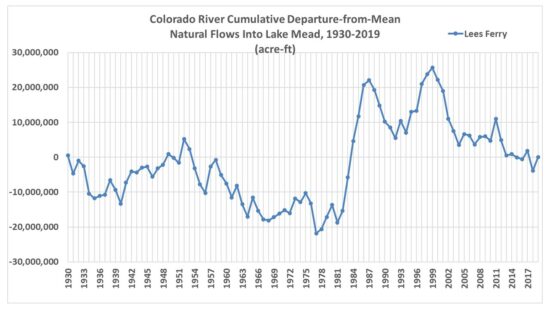
Fig. 5. As in Fig. 1, except time-accumulated departures-from-average Colorado River flows into Lake Mead.
Before the 1980s, there was somewhat reduced river flow into Lake Mead, but it made little difference because water use (Fig. 4) was still low.
Then from the 1982-83 super El Nino year to approximately 2000 there were above average flows, so Lake Mead could handle the increasing water usage. In fact, the lake reached near full-pool status.
But as usage peaked around 2000, river input to the lake was reduced once again. This put Lake Mead into an unsustainable state where more water was being extracted than the Colorado River could replenish it.
It has been long known (e.g. here) that precipitation in this region is affected by El Nino (more precip) and La Nina (less precip). Also, the Pacific Decadal Oscillation (PDO), which is basically a low-frequency manifestation of El Nino and La Nina activity is related to precipitation in this area.
I computed the cumulative average departures from the long-term mean of both the PDO index and the MEI (Multivariate ENSO Index). The PDO is somewhat higher correlated (r=0.52) with the cumulative river flow data in Fig. 5. As Fig. 6 shows, positive PDO periods are generally associated with higher stream flows, and negative PDO with lower stream flows. Most notably, the period since 2000 has seen more negative PDO activity, which is worsening the problem with Lake Mead not getting enough water. Of course, this will eventually reverse when the PDO flips back into its positive phase.
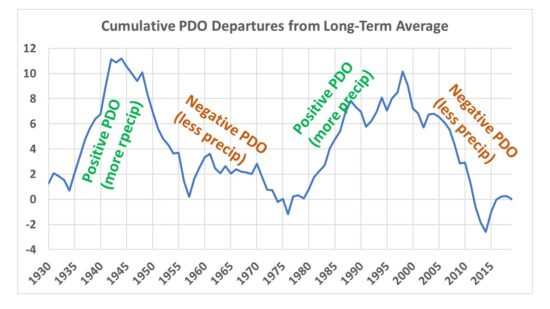
Fig. 6. Cumulative departures of the Pacific Decadal Oscillation index from its long term mean, which is r=0.52 correlated to cumulative streamflow into Lake Mead from the Colorado River (Fig. 5.)
Conclusions
The popular narrative that drought due to climate change is causing Lake Mead to have less water available to it is incorrect. Since 1930, there has been no long-term change in the Colorado River flow upstream of what is now Lake Mead.
The latest climate models do not even predict a reduction in precipitation in the upper Colorado River watershed.
Multi-decadal changes in river flow do occur, though, and are related to the Pacific Decadal Oscillation, a natural fluctuation in weather patterns over the northeast Pacific. Recent record-low water levels in Lake Mead are primarily due to record high water demand from the lake, since approximately 2000. The problem is being made somewhat worse by the negative phase of the PDO, also since approximately 2000.

 Home/Blog
Home/Blog